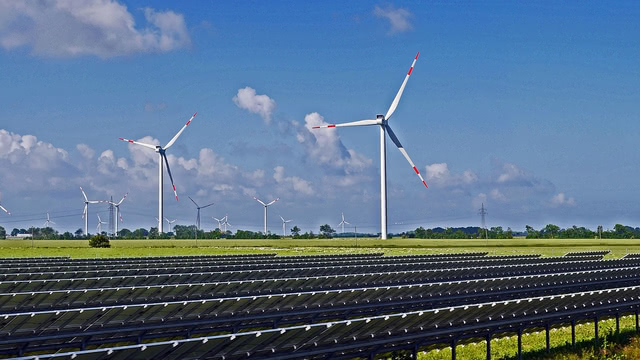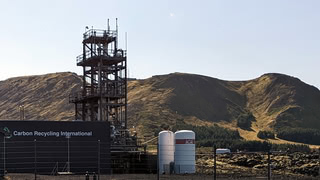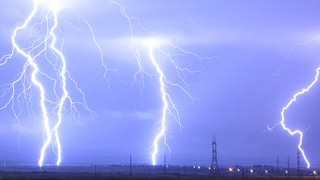The Future Dominance of Solar and Wind Energy
There is surprisingly strong agreement in future energy scenarios about the dominance of solar and wind energy.

Discussions about the future energy supply can often get controversial. But there is a surprisingly strong consensus among experts that look into the future of energy about the dominant role renewables, particularly wind and solar energy, will play in the future.
Several organizations publish regular reports with scenarios about the future of energy. We will look at reports from the International Energy Agency (IEA), the International Renewable Energy Agency (IRENA), BP, Bloomberg NEF, and DNV.
Each of these comes with its biases and particular perspectives. The IEA can probably best be described as the "mainstream" view. It is an organization funded by governments, and its 42 member states and association countries represent "about 75% of global energy consumption", according to their own description.
IRENA is also an intergovernmental organization, with the explicit goal of promoting renewable energy. With its 168 member states, it has an even stronger representation of the world's governments.
BP is one of the largest oil companies in the world, so its interests and biases should be apparent. Nevertheless, researchers and energy analysts often consider the yearly bp Energy Outlook a useful resource.
BloombergNEF is a private research organization focusing on the transition to a lower-carbon economy. DNV is a registrar and classification society for the maritime industry.
We are looking at the future of electricity generation, which does not cover all energy use. It is, however, expected that in the future - particularly if decarbonization is successful - electricity will cover a much larger share of the energy supply.
This is what these reports have to say about electricity generation in 2050:
-
The IEA's World Energy Outlook contains three scenarios representing different climate policy ambitions. In the STEPS scenario, the one with the lowest climate policy ambitions, the share of electricity in 2050 is: Solar 24%, wind 21%, hydro 14%, gas 13%, coal 12%, nuclear 9%. In the slightly more ambitious APS scenario: Solar 31%, wind 28%, hydro 12%, nuclear 12%, gas 6%. In the NZE (Net Zero Emissions) scenario, the one with the most ambitious climate policy: Solar 37%, wind 32%, hydro 11%, nuclear 8%.
-
IRENA's 1.5°C scenario in its World Energy Transitions Outlook assumes 33% wind, 32% solar, 13% hydro, 5% gas, and 5% nuclear. (IRENA lists onshore and offshore wind as well as photovoltaics and concentrated solar power separately, I combined them for simplicity.)
-
BP's Energy Outlook includes three scenarios representing different ambitions. It combines wind and solar in one category and "other low-carbon" in another (that includes hydro, nuclear, and fossil fuels with carbon capture). In the lowest climate ambition scenario "New Momentum" the numbers are: 44% wind and solar, 21% other low carbon, 20% gas, 14% coal. In the scenario with medium ambition, "Accelerated": 67% wind and solar, 25% other low carbon, 7% gas. In the most ambitious "Net Zero" scenario: 69% wind and solar, 25% other low carbon.
-
Bloomberg NEF has two scenarios in its New Energy Outlook. "Economic Transition" with 36% Wind, 29% solar, 10% other renewables (including hydro), 9% coal, 8% gas, and 7% nuclear. "Net Zero" with 48% wind, 28% solar, 9% nuclear, and 6% other renewables. (These numbers are extracted from their graphics, as they do not come with the raw numbers.)
-
The Energy Transition Outlook by DNV includes only one scenario, with a share of 38% solar, 33% wind, 12% other renewables, 8% gas, and 5% nuclear.
All numbers are from the respective reports in 2022. For simplicity, numbers below five percent are not mentioned here, and everything is rounded to whole percent values.
Some scientists and energy modelers consider these scenarios to be too pessimistic about renewables. The IEA is often criticized for having consistently underestimated the growth of solar energy in the past. In a recent paper, scientists from several different research institutions and universities gave an overview of 100% renewable energy scenarios - not just for electricity, but for the whole energy system.
In summary, we can conclude a few things:
-
There is widespread consensus that solar and wind energy will be the two most dominant sources of electricity by 2050.
-
In most scenarios, wind and solar combined have a share of more than 50 percent. Notably, this is the case in all scenarios with a high policy ambition to tackle climate change.
-
Not a single scenario sees a leading role for any other low-carbon source. Not nuclear, not CCS, not fusion.
-
No scenario considers nuclear fusion power to play any role in the electricity system in 2050.
-
There is a controversy about which role wind and solar should and can play in the future, but it is not whether they will dominate the electricity system. It is just how strong that domination will be.
-
Likewise, there is a controversy about which role technologies like carbon capture and nuclear energy can play, but there is a large consensus that they will not play a leading role.
Of course, projections and scenarios do not have to become a reality. But as these numbers should show, the dominance of solar and wind is a consensus among the majority of experts.
Author: Hanno Böck
Brief
-
Solar geoengineering, the idea of spraying sulfur particles into the stratosphere to cool down the planet, is controversial. While some scientists propose carefully studying the idea, a startup called Make Sunset now claims to have already started doing that. David Keith, one of the leading researchers of solar radiation management, explains on Twitter why he thinks commercializing geoengineering would be a bad idea.
-
NPR published an investigation on how power companies influence local news sites in the US.
-
A graphic by David Cebon of the Hydrogen science coalition illustrates the efficiency of heat pumps compared to hydrogen heating.
-
An important question about green hydrogen production is how the renewable energy supplied is counted and whether its production needs to match the hydrogen production closely. A team of researchers has modeled different scenarios and concludes: "The largest emission reduction is achieved with hourly matching when surplus electricity generation can be sold to the grid."
-
Danish energy company Ørsted has announced that it has taken full ownership of the e-methanol FlagshipONE project initially developed by the company Liquid Wind. The plant is expected to produce 50,000 tons of green methanol per year starting in 2025.
-
In an interview with the Columbia Journalism Review, climate journalist Ajit Niranjan talks about how to better cover climate solutions.
-
Norway and Germany have announced various collaborations regarding hydrogen and CCS technology. A key project is a planned hydrogen pipeline from Norway to Germany. Controversy is ensured, as the partnership involves not just green hydrogen, but also so-called blue hydrogen made from fossil gas with carbon capture and storage (CCS).
-
In Germany, the village Lützerath is being evicted for the expansion of an opencast coal mine. Climate activists have occupied the village, and large protests are expected. I will just link this iconic image by photographer Marius Michusch to give you an impression.



